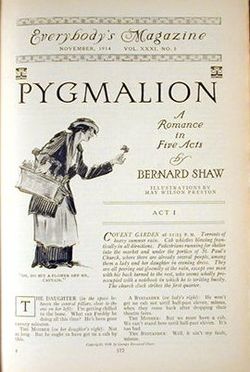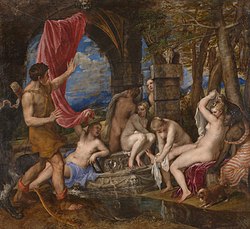Metamorphoses (Transformations) is a Latin narrative poem by the Roman poet Ovid, considered his magnum opus . Comprising fifteen books and over 250 myths, the poem chronicles the history of the world from its creation to the deification of Julius Caesar within a loose mythico-historical framework. Although meeting the criteria for an epic, the poem defies simple genre classification by its use of varying themes and tones.
Considered one of the most influential works of art in Western culture, particularly European, Metamorphoses has inspired such authors as Geoffrey Chaucer, William Shakespeare, Dante Alighieri and Giovanni Boccaccio. Numerous episodes from the poem have been depicted in sculptures and paintings by artists such as Titian. Although Ovid's reputation faded after the Renaissance, towards the end of the twentieth century there was a resurgence of interest in his work; today, Metamorphoses continues to inspire and be retold through various media.
This page is based on this
Wikipedia article Text is available under the
CC BY-SA 4.0 license; additional terms may apply.
Images, videos and audio are available under their respective licenses.

